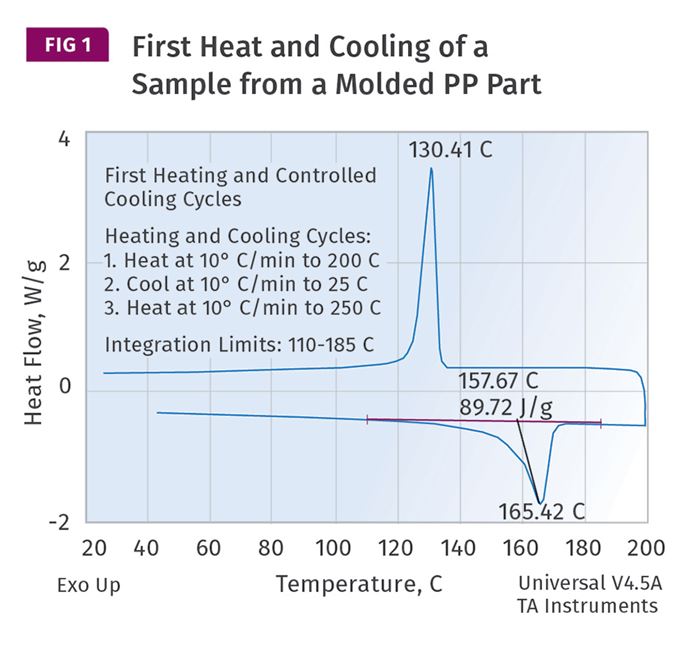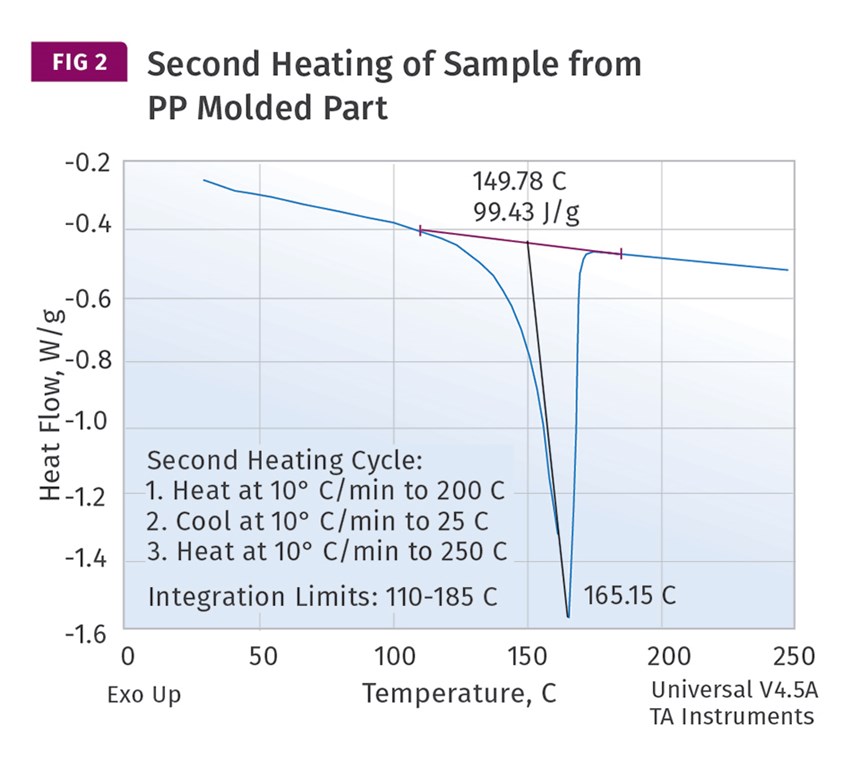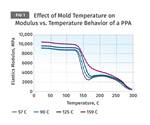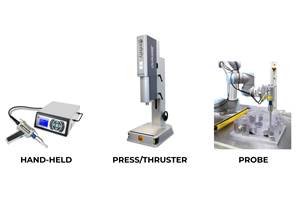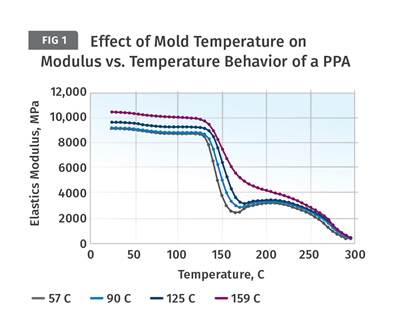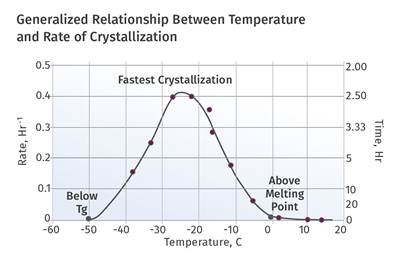A Processor’s Most Important Job, Part 3: Unintended Consequences
Processors are often expected to compensate for ill-advised decisions made earlier in the product-development process. In the case of shrinkage, one of the most common ‘fixes’ is to simply reduce the mold temperature.
This is part three of an eleven-part series focused on the most important job of a processor. To read the rest of this series, click these links:
part one, part two, part four, part five, part six, part seven, part eight, part nine, part ten, part eleven.
A few years ago, I received a call from one of my clients, a processor with a reasonably good understanding of the way plastic materials behave. They had a customer who was upset with them over the way they had “solved” a warpage problem with a part molded in a glass-fiber-reinforced PBT polyester. They had started out with a high mold temperature of 200°F (93°C). The parts came out of the tool and very quickly warped as they cooled. They dealt with this problem the way many molders do: They turned the mold temperature down. When the mold temperature reached about 95°F (35°C) the parts were straight. Problem solved.
Unfortunately, the parts have to operate in their customer’s application at 180°F (82°C). So, the customer qualified the parts by putting them into an oven for two hours at 200°F (93°C). When they conducted this test on these parts, they observed that the parts warped to almost the same degree that they did when they came out of the hot mold. The parts were rejected, which my client felt was unfair.
I pointed out to them that they had corrected the warpage problem by suppressing the ability of the PBT to crystallize. Crystallization is accompanied by shrinkage. Crystals are well-ordered domains within the polymer structure and they occupy less space than the amorphous regions. The more a material crystallizes, the more it shrinks. The initial mold temperature was above the glass-transition temperature (Tg) of the polymer and the resin had the opportunity to crystallize to a degree that was reasonably close to the maximum that was achievable. The reduced mold temperature was below the Tg and the degree of crystallinity was correspondingly lower. This reduced the shrinkage of the material.
Warpage is a symptom of shrinkage that occurs at different rates in different areas of the part. It can have a number of specific causes, such as varying wall thickness, different cooling rates due to uneven heat removal from the part and different degrees of shrinkage caused by glass-fiber orientation. These are part-design, mold-design or material-selection issues—not processing issues.
But too often the processor is expected to compensate for ill-advised decisions that are made earlier in the product-development process. And one of the most common “fixes” for excessive shrinkage is to simply reduce the mold temperature. This is also a common strategy for reducing overall shrinkage when the actual shrinkage turns out to be greater than the value that was used to cut the tool. If an outer diameter or an overall length is too small, just turn down the mold temperature and the parts get larger. It seems simple and harmless because the lack of crystallization is not a defect that can be seen by those inspecting the parts.
Check Dimensional Stability
The only way to detect the problem is by doing what my client’s customer did, heat the parts to operating conditions and check for dimensional stability. If the parts had crystallized to an appropriate level, the oven exposure would not have created any new crystalline structure, and the part size and shape would have remained essentially the same. But in this case, the as-molded structure and the intended structure were quite different, and when the polymer was exposed to a temperature that re-established the mobility needed to form new crystals, it did what it was intended to do.
Questions about materials? Visit the Materials Zone
If the dimensional changes associated with this additional crystallization occur once the part is in the field, the results can be unpleasant, to say the least. Cracks can occur at attachment points; parts that are designed to move relative to one another can bind; components designed to act as sealing surfaces can allow fluids to leak from a valve or a housing. In this case, the warpage was an indicator that there was a problem that needed to be addressed, not covered up by making an ill-advised process adjustment.
It is important to understand that the cooling rates associated with injection molding will never allow attaining the maximum achievable level of crystallinity. Consider a nylon 66 heated to a melt temperature of 550°F (288°C) entering a mold cavity set at 210°F (99°C), a temperature above the Tg of the nylon that will produce a relatively high degree of crystallinity. If the part cools to an ejectable temperature in 30 seconds, then the cooling rate for the material is 680°F (378°C) per minute! When we test materials under laboratory conditions, we traditionally use heating rates of 10°C or 20°C per minute. Therefore, we can achieve a level of perfection in the lab that cannot be attained at the press, even when we do things as well as possible. We also know that the cooling rate at the part surface is faster than in the middle of the wall unless the nominal wall is very thin. But for processors, the objective is to balance production efficiency with achieving a condition in the polymer that ensures good, but not perfect, stability.
We can perform a test called differential scanning calorimetry (DSC) to check our work. This involves preparing a sample from the molded part and heating it under controlled conditions in the DSC until it melts. The melting event will be observable as a peak that is associated with a property known as the latent heat of fusion. This is a measure of the degree of crystallinity. The greater the heat of fusion, the more crystal structure is present in the molded part.
The melted sample is then cooled back to the solid state, producing a peak that is a mirror image of the melting event. This is the heat released by the process of crystallization. This heating and cooling process erases the thermal imprint of the molding process. When we heat the sample a second time, we should see a new heat of fusion that will be higher than the one we saw on first heat. This is because the cooling rate in the DSC is much slower than that which the material experienced during the molding process. Figures 1 and 2 show the results for this type of DSC test performed on a PP part.
The heat of fusion on first heat is 89.72 J/g, while the second heat of fusion is 99.43 J/g. When we divide the value from first heat by the value from the second heat we get 90.2 percent. That is considered to be the degree of crystallinity that we achieved relative to what was theoretically possible if we could somehow cool the polymer very slowly in the mold and convince our customer that it was acceptable to produce 15 parts per hour. This is the point. In the real world of manufacturing, there is a compromise between achieving the perfect structure in material and making a part at a price that is competitive. A value of 90 percent is considered to be a good outcome in most cases. It is important to understand that this result does not mean that the polypropylene in the molded part is 90 percent crystals.
The value is a percentage of what was attainable. The absolute degree of crystallinity in this part is actually a little less than 50 percent, which is quite normal in polypropylene. Because PP is one of those materials that does not crystallize to a significantly greater degree as mold temperature is increased, there is little danger in running a mold temperature that is relatively low. In this case, the mold temperature was 100°F (38°C). But as we will see in subsequent articles, sometimes cooling down the mold causes us to miss the target by a much larger amount. This usually occurs in high-performance materials.
About the Author
Michael Sepe
Michael Sepe is an independent, global materials and processing consultant whose company, Michael P. Sepe LLC, is based in Sedona, Arizona. He has more than 40 years of experience in the plastics industry and assists clients with material selection, designing for manufacturability, process optimization, troubleshooting and failure analysis. Contact: 928-203-0408 • mike@thematerialanalyst.com.
Related Content
Five Quick Steps Toward Better Blending
Rising costs of resins and additives, along with higher demands for quality and use of regrind, place a premium on proficient blending. Here are some steps to get you there.
Read MoreMedical Tubing: Use Simulation to Troubleshoot, Optimize Processing & Dies
Extrusion simulations can be useful in anticipating issues and running “what-if” scenarios to size extruders and design dies for extrusion projects. It should be used at early stages of any project to avoid trial and error and remaking tooling.
Read MoreA Guide to Ultrasonic Welding Controls
Ultrasonic welding today is a sophisticated process that offers numerous features for precise control. Choosing from among all these options can be daunting; but this guide will help you make sense of your control features so you can approach your next welding project with the confidence of getting good results.
Read MoreThe Effects of Time on Polymers
Last month we briefly discussed the influence of temperature on the mechanical properties of polymers and reviewed some of the structural considerations that govern these effects.
Read MoreRead Next
A Processor’s Most Important Job, Part 4: Mold Temperature
Engineering polymers require higher mold temperatures to achieve their ideal structure. The temptation to turn down the mold temperatures can hurt part performance.
Read MoreA Processor’s Most Important Job, Part 2: Crystallinity
Process conditions help determine the difference between the maximum degree of crystallinity that can be achieved in a polymer and the degree that is present in a molded part.
Read MoreMaking the Circular Economy a Reality
Driven by brand owner demands and new worldwide legislation, the entire supply chain is working toward the shift to circularity, with some evidence the circular economy has already begun.
Read More
.jpg;width=70;height=70;mode=crop)
